#maurizio millenotti
Explore tagged Tumblr posts
Text


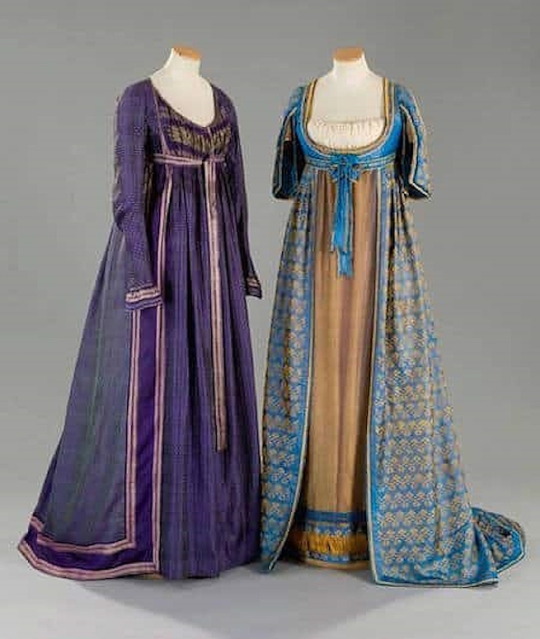
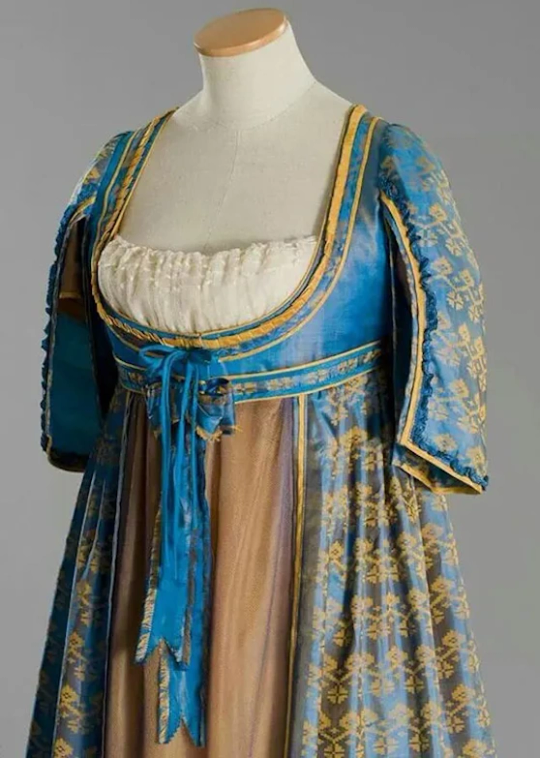

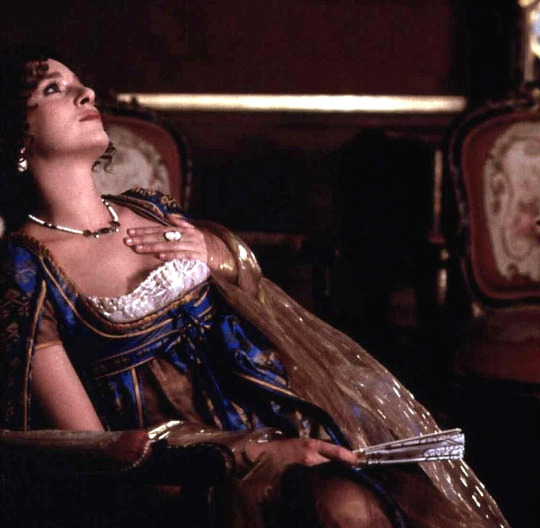
One Dress a Day Challenge
Anything Goes December
Immortal Beloved / Valeria Golino as Giulietta Guicciardi
The combination of bronze and deep turquoise in this gown is quite striking, especially when you add the shimmery wrap. I'm not an expert on the period, but I get the impression this sort of saturated color is more common in continental Europe than in Britain during this time period.
Costumes for this film were designed by Maurizio Millenotti.
#immortal beloved#anything goes december#valeria golino#one dress a day challenge#one dress a week challenge#19th century costumes#regency costumes#regency era#1994 movies#1994 films#period film#maurizio millenotti
81 notes
·
View notes
Text


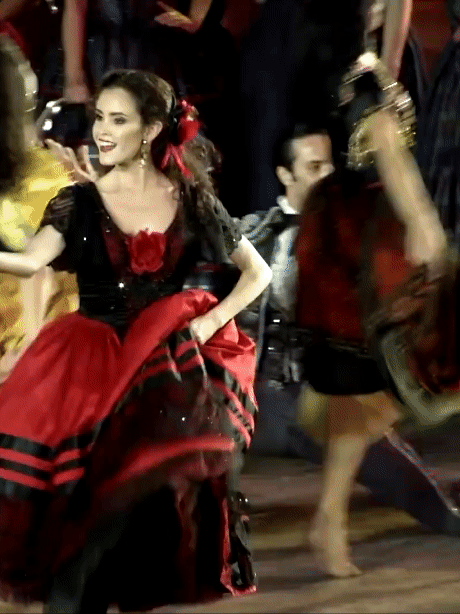
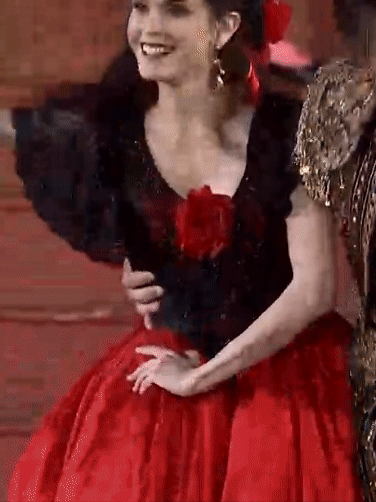
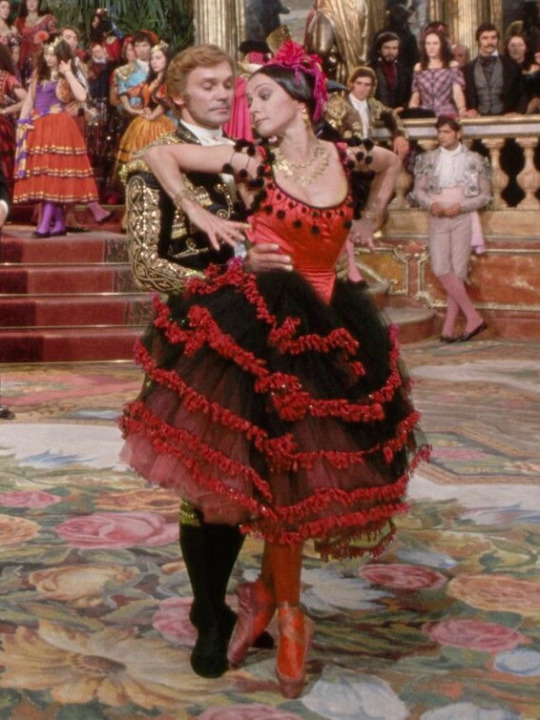
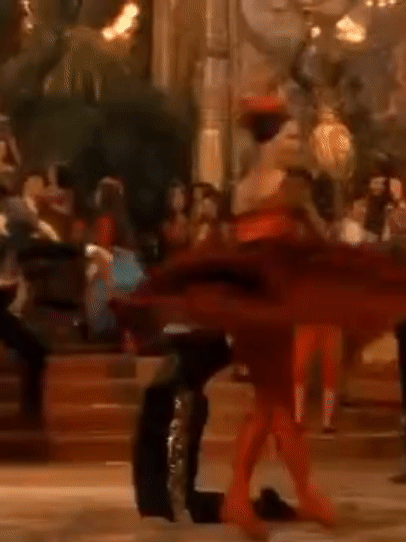


Principal dancers’ costumes for La Traviata: Arena di Verona 2019 production designed by Maurizio Millenotti / Franco Zeffirelli 1982 movie designed by Piero Tosi
43 notes
·
View notes
Text
'Based on Patricia Highsmith’s bestselling Tom Ripley novels, Netflix’s eight-episode limited series Ripley stars Andrew Scott as the eponymous antihero, a grifter scraping by in early 1960s New York. When Tom is hired by a wealthy man to travel to Italy and convince his vagabond son, Dickie (Johnny Flynn), to return home, he takes his first step into a complex life of deceit, fraud and murder.
The series was written and directed by Steven Zaillian, who partnered with cinematographer Robert Elswit, ASC for all eight episodes. Elswit’s primary lenses for the production were Panavision VA primes, supplemented with select Primo 70 and Ultra Speed focal lengths as well as Primo 70 and prototype VA zooms. Here, in his own words, the cinematographer details the creative collaborations that brought Ripley to the screen.
I’d worked with Steve Zaillian a few years earlier on the pilot of his series The Night Of. I knew from that experience that Steve has very specific ideas about the lighting design and overall pictorial style of his shows. Very much like a cinematographer, Steve believes that the lighting of a movie, the way the spaces and characters are lit, is a way of making a direct connection to the emotions of an audience. When he told me that he wanted to shoot Ripley in black-and-white, I knew he had very different ideas about the nature of the character and story in his version of Highsmith’s novel.
When I came on the show, both Steve and our production designer, David Gropman, had already spent months scouting and photographing locations throughout Italy, and they'd created a vast collection of black-and-white images not only of the locations but also the work of many Italian photojournalists that Steve felt were evocative of the era. The pictures became a great reference tool for thinking about shooting in monochrome.
In Steve’s script, Tom's actual talent initially seems to be simply that of a con man. A cold and calculating sociopath who’s able to manipulate and exploit, to hide his emotions and play any role. But soon after Tom arrives in Europe and is exposed to the life and culture, language, food, architecture, and especially the music and art of Italian culture, it changes him in unexpected ways. It’s Tom's introduction to the work of the 17th-century Italian painter Caravaggio that makes a particularly strong emotional impact on him.
Caravaggio appears nowhere in the Highsmith novel. The inclusion of his art and then the painter as an actual character in Ripley is a pure Steve invention. Tom's initial response to the painter’s work is reinforced as he learns more about the painter’s life. He begins to identify with him as he learns of the many parallel events in their two lives. As Tom travels through Italy to avoid the police, he seeks out Caravaggio’s paintings wherever he is. His obsession and identification with the painter becomes one of the central themes in the second half of the story — and it’s Caravaggio’s depiction of characters and spaces with a strong emphasis of contrasting light and dark that could also be seen as a metaphor for the narrative drama in Ripley.
The specific style of Caravaggio’s painting, chiaroscuro, refers to the use of strong contrasts between light and dark that direct the eye and also strongly affect the overall composition of his paintings. This creates an underlying sense of drama and tension that we see in much of Caravaggio’s work. It’s this lighting style, emphasizing the contrast between light and dark, that is particularly well suited to black-and-white cinematography. We see examples of it in early cinema, especially in the great German expressionist films of the silent era. It’s a lighting style that becomes associated with the American film noir movies of the ’30s and ’40s.
From the very beginning, Steve wanted this style of lighting, along with strong graphic compositions, to become the unique way we see the world in Ripley. With the sets, locations, costumes, weather, time of day and lighting, we tried to emphasize strong contrast between light and dark. For me, this meant the use of harder light sources throughout with the resulting stronger shadows and emphasis on texture that, in color, could seem theatrical and unrealistic, but in black-and-white becomes dramatic and somehow more truthful.
We had a 160-day schedule with an almost endless number of locations in various cities and lots of nights. Because of the large amount of VFX work and the 4K delivery requirement, we decided the best production camera for us was the Alexa LF. Steve was promised a black-and-white release, but there was no thought of using a camera without a color filter array. The advantage of using a camera without a filter array is that you pick up extra stop and supposedly there’s finer gradations in the mid tones — but also, no filter means a sharper image. The digital image is already too sharp, so that’s the last thing I wanted.
The images were recoded as color files, but all the on-set monitors were black-and-white. I used a black-and-white LUT that I thought looked like a slightly more contrasty version of the old Kodak 5231. It’s what I looked at and lit to in the DIT tent. We got two sets of dallies each day, one in color and the other in black-and-white; we never looked at the color files, and Steve edited the show with the black-and-white Avid files.
Not needing to deal with color allowed our wonderful DIT, Marco Coradin, to each day download a very accurate black-and-white version of what would be the final look of the show. I just made sure we were always exposing to hold the sky or whatever highlight detail I hoped to retain, but that wouldn’t be visible in the dailies. We worked at ISO 800 for almost everything except the nights, which we shot at 1600.
We shot the entire show with a set of Panavision’s VA primes. My longtime, long-suffering assistant Erik Brown put a wonderful set together with Dan Sasaki’s help. We also took along some large-format zooms, including the 28-80mm, 70-185mm and 200-400mm. We used the zooms mostly for the water work in the killing of Dickie sequence, which we did off of cranes.
Throughout the show, Steve wanted to avoid any feeling of a sunlit travelogue quality to the visuals. To shoot the killing of Dickie as an exterior and control the light for the six days needed to complete the sequence, we shot in a large swimming pool near Rome. We put scaffolding up on three sides with a mix of greenscreens and heavy diffusion and covered the opening at the top with a charcoal scrim to diffuse the sun. For the all the boat work to look photo-real, we also had to create a lighting direction so a believable overcast sky that would be added later could have shape and texture. To do this, we added HMIs to the scaffold structure and bounced them into diffusion to keep a consist, subtle shape to the boat and actors.
The amazing Chris Centrella was the key grip on the show, and the great Francesco Zaccaria was our gaffer; together, they handled this and all the many complicated sequences on the show beautifully. Weta FX in New Zealand did the sky and water blends in post. All of their work throughout the sequence is seamless and spectacular.
Along with David Gropman’s wonderful sets, I have to mention the extraordinary work of our two costume designers, Gianni Casalnuovo and Maurizio Millenotti. They built every piece of clothing the principals wore. Their coats, shirts, sweaters and suits are character studies in themselves. There are many shots that really came together because of the tonal values and textures of the clothes the characters wore. And there wasn’t a stich of clothing, stick of furniture or a prop of any kind that Steven didn’t carefully agonize over. There were a lot of props — it took two full days to get through the great prop master David Gulick’s show and tell.
Many of us spent over a year working in Italy and the U.S. on this show, but for Steve Zaillian, Ripley has been a five-year-long labor of love. It’s been wonderful to see it so well received.
In episode 4, Tom visits a church in Rome where three of Caravaggio’s paintings of St. Matthew hang together in one of the small chapels. There’s a tiny window over the altar, but the paintings themselves are very dark. If you drop a coin in a small box on the chapel railing, three small spots switch on and light up the paintings. We shot the sequence in a deconsecrated cathedral in Naples, but the scene was inspired by one of Steve’s earlier visits to San Luigi dei Francesi, the church in Rome where the three paintings are actually hanging. Steve said that after he dropped a Euro in the box, a moment after the lights came on, he heard the voice of a priest standing behind him say, ‘It’s the light, it’s always the light.’ It’s a quiet and very emotional moment as Tom hears the priest and gazes up at the paintings.
Throughout the making of Ripley, ‘it’s always the light’ was one thing we tried never to forget.'
#Ripley#Netflix#Patricia Highsmith#Robert Elswit#Steven Zaillian#Caravaggio#Naples#Rome#The Night Of#David Gropman#Dickie Greenleaf#Johnny Flynn#Marco Coradin#Maurizio Millenotti#Chris Centrella#David Gulick#Gianni Casalnuovo#Erik Brown#Dan Sasaki
2 notes
·
View notes
Text










panavisionofficial
“Yeah, I can't remember what we shot with. I have to call Erik Brown. He's my lifeline,” jokes legendary #DOP Robert Elswit ASC, as we sat down to discuss Ripley.
“I've worked with [director] Steven [Zaillian] before, and like all cinematographers, he believes that the way something's lit is actually a way to affect people's emotions. There are a lot of directors who actually don't believe that, but Steven is one of those who feels very strongly that there's an emotional message that the lighting in a movie delivers.
I had a copy of the Patricia Highsmith series of the latest series of Ripley books with these beautiful covers and black and white images, and Steven said that as he was writing, he just saw the whole thing in monochrome. As we got more into it, and as I read the script, I realized that a big part of the agenda of the backstory is Caravaggio. Steven and I would talk about how Caravaggio invented the whole idea of how the light is playing an emotional, dramatic purpose in his paintings. What was lighting the people and the objects in the room was very selectively realized— faces, arms, gestures—all almost theatrical looking. The lighting dominates the color palette. It dominates even the design in places. There are strong graphic images, but even if you look at them in black and white, which we were in the series, it's all about the light, which is actually a line that one of the characters says.
I didn’t want [lenses] that were too sharp and I think that's something that Dan [Sasaki] reacted to. He made something that was wide open but with no greasy, sharp, surveillance photography look. I don't know how [Dan Sasaki] does it, but we shot the whole series with just five lenses. Then there are the zooms that he made when we did the water scenes.
You can't make something like Ripley look like Ripley unless everybody's all in. It's the production, it’s [production designer] David Gropman, the great costume designers on the show, Gianni Casalnuovo and Maurizio Millenotti. Their sense of understanding of what tonal structure meant, and how to achieve an interesting kind of contrast of pictorial style in this series was essential."
#andrew scott#robert elswit#david gropman#steven zallian#ripley#ripley netflix#cinematography#chiaroscuro#long post#patricia highsmith#dakota fanning#johnny flynn
81 notes
·
View notes
Text

Period dramas dresses tournament: Grey/Silver dresses-
Round 1 Round 2 Round 3 Round 4 Semifinals Finals
Winner: Isolde's dress, from Tristan & Isolde
Costume designer: Maurizio Millenotti
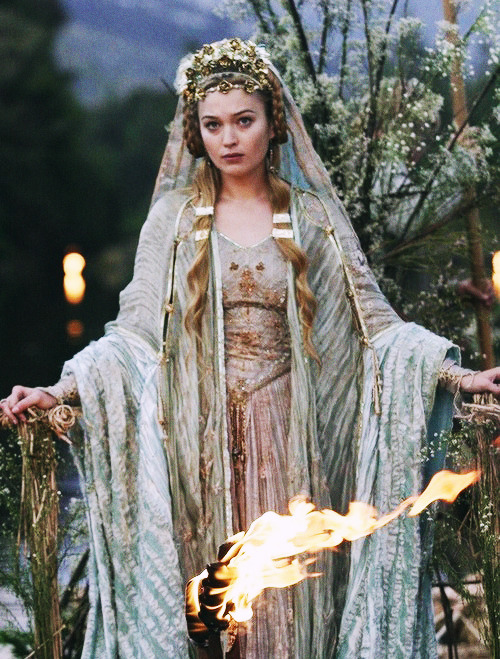
113 notes
·
View notes
Text


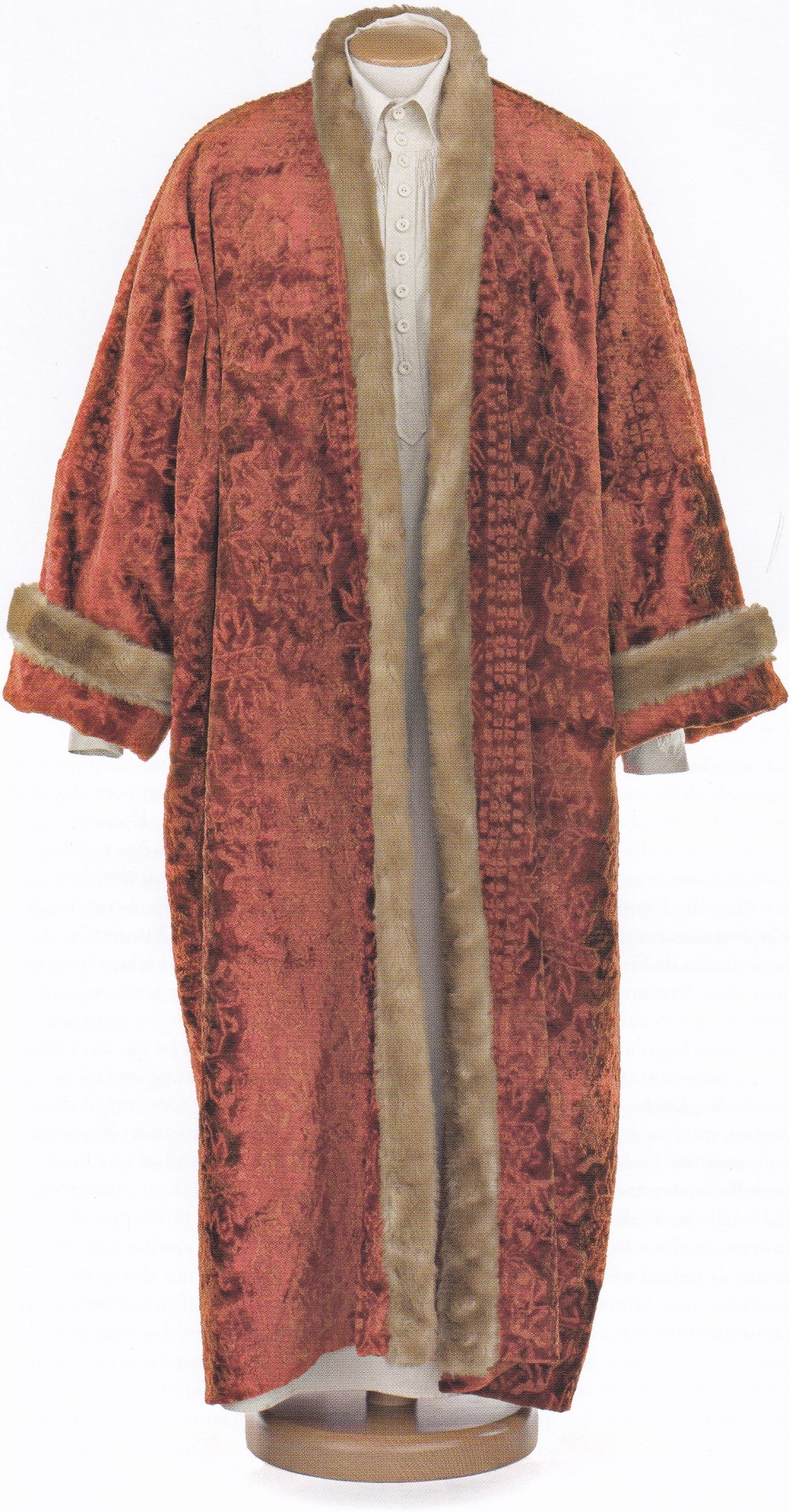
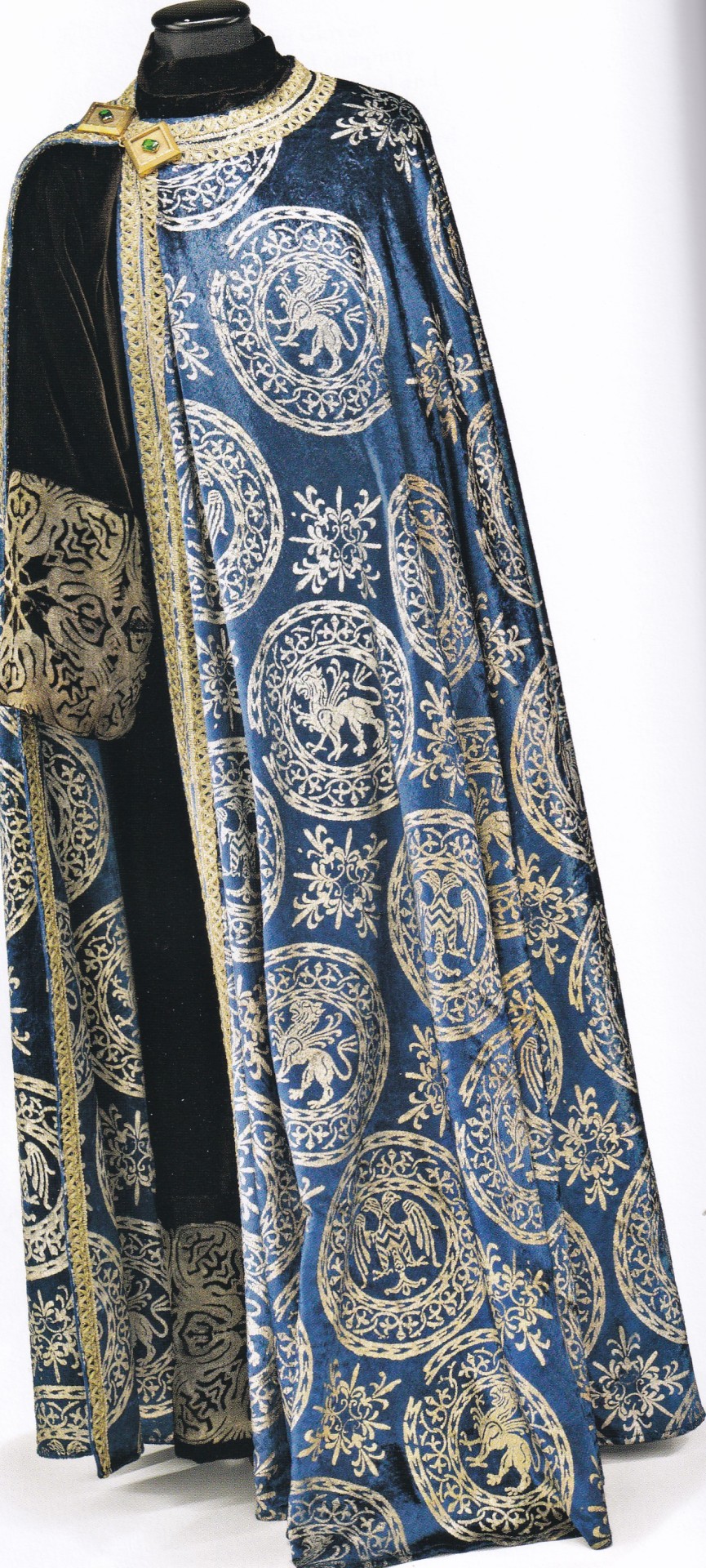


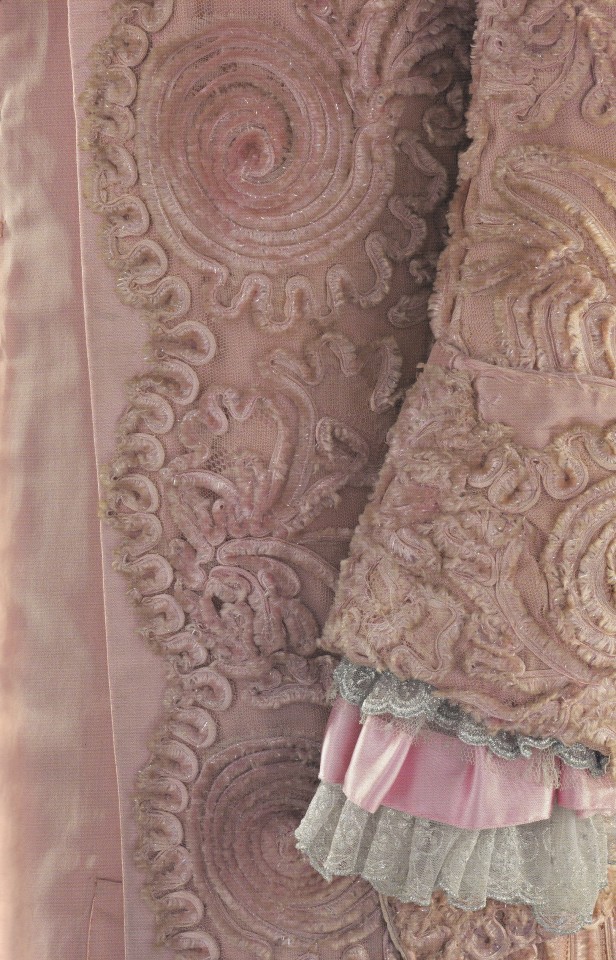
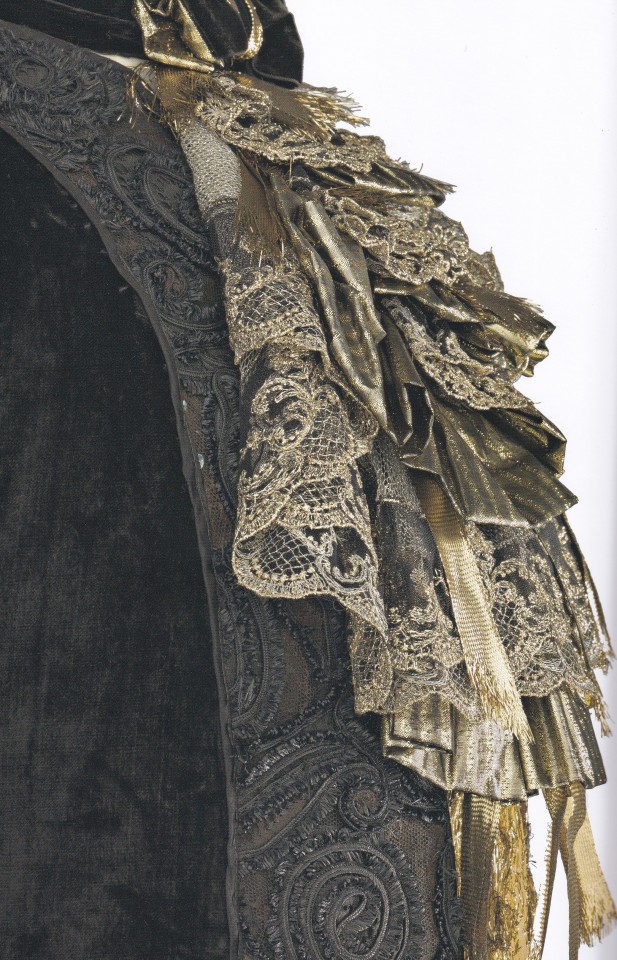



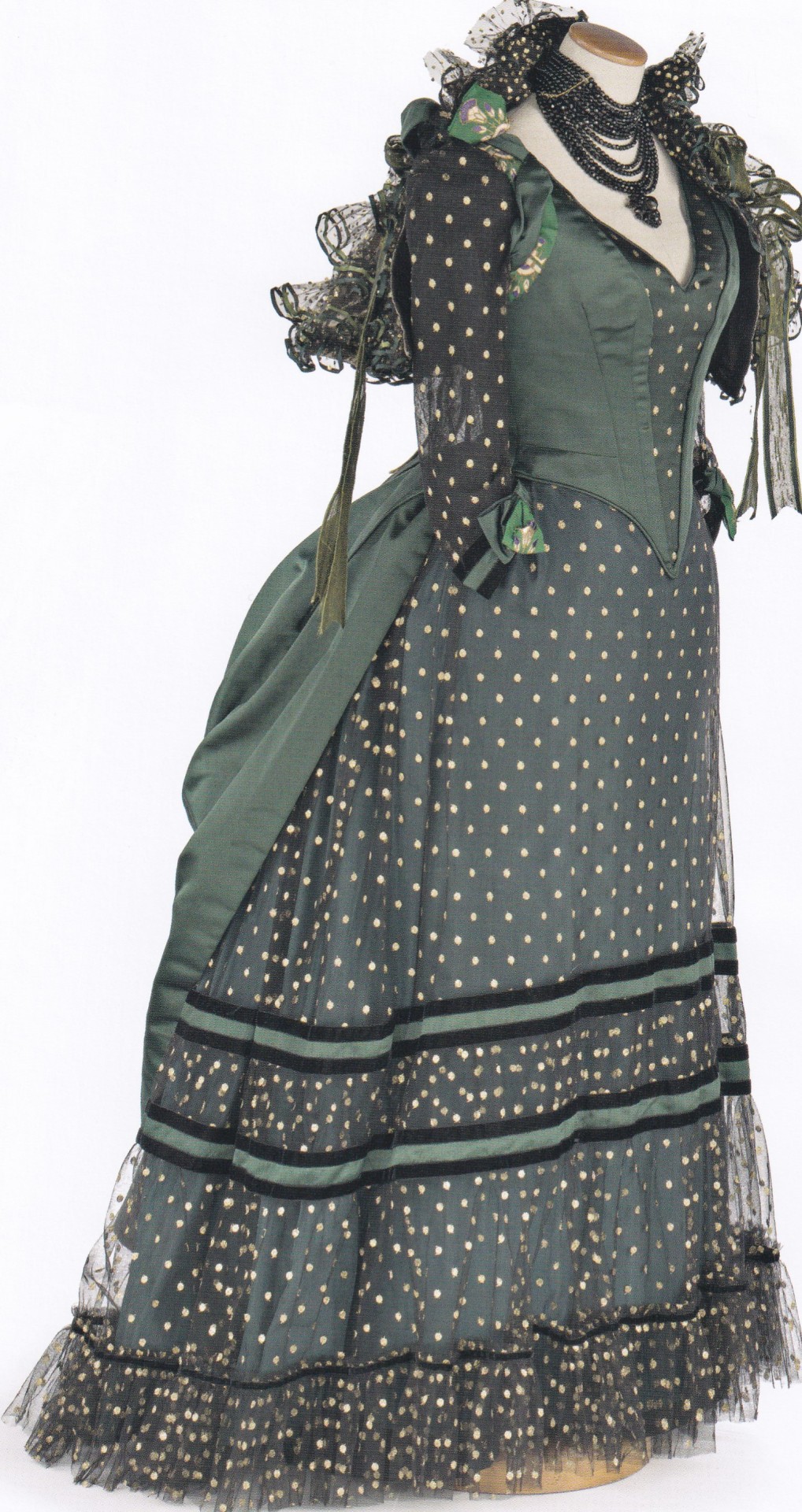


Umberto Tirelli Ritorno a Gualtieri
a cura di Gabriella Pescucci
Corsiero Editore, Reggio Emilia, seconda edizione 2019, 136 pagine, 21x30,5cm, ISBN 978-88-98420-94-0
euro 35,00
email if you want to buy [email protected]
Catalogo dell’omonima mostra, curata dalla costumista premio Oscar Gabriella Pescucci, a Palazzo Bentivoglio di Gualtieri (Reggio Emilia) con oltre una trentina di costumi realizzati dalla Sartoria Tirelli per spettacoli teatrali e film.
Questa mostra segna il ritorno simbolico di Umberto Tirelli al suo paese d’origine, ma ne attraversa nel contempo l’intera carriera, attraverso le sue stesse parole che descrivono l’amicizia con Romolo Valli e Gian Luigi Pizzi, con Luchino Visconti e Danilo Donati, con Piero Tosi e Federico Fellini. La storia della Sartoria Tirelli non si esaurisce però con la figura di Umberto Tirelli: la sua eredità di valori e di dedizione al lavoro continua tuttora, attraverso la collaborazione con i maggiori costumisti del panorama internazionale.
Nel catalogo sono presenti i costumi di Milena Canonero, Massimo Cantini Parrini, Danilo Donati, Alessandro Lai, Gitt Magrini, Maurizio Millenotti, Ursula Patzak, Gabriella Pescucci, Pier Luigi Pizzi, Carlo Poggioli, Ann Roth, Piero Tosi e Mariano Tufano, realizzati per i film e gli spettacoli teatrali di Sofia Coppola, Fanny Ardant, Matteo Garrone, Federico Fellini, Ferzan Ozpetek, Bernardo Bertolucci, Paolo Virzì, Anthony Minghella, Martin Scorsese, Luchino Visconti, Giorgio Diritti, Carlo Hintermann, Mauro Bolognini e Giorgio De Lullo.
14/03/24
#Umberto Tirelli#Ritorno a Gualtieri#exhibition catalogue#Palazzo Bentivoglio Gualtieri 2018#SartoriaTirelli#theatrical & movie costumes#fashionbooksmilano
12 notes
·
View notes
Text

Edwin Alexander Francis plays Montano in "Otello" (Giuseppe Verdi) film-opera, directed by Franco Zeffirelli (1986)
Here are a few backstage snapshots after a days filming and rehearsing at Barletta Castle, Apulia with the stars Justino Diaz (Jago) and Placido Domingo (Otello) with his make-up still on :-)


..and another couple on the night set "Otello", Act I, portside, in Heraklion, Crete (with the Italian 'maestri d'armi' / stunt men ->
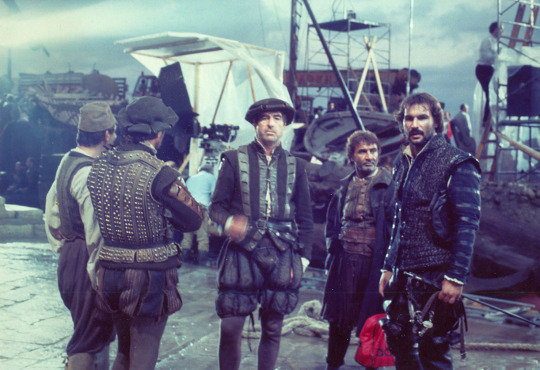

...and in one of my 'Montano' costumes (by Anna Anni + Maurizio Millenotti)
2 notes
·
View notes
Photo

Costume for Alan Bates as Claudius, King of Denmark in 'Hamlet' Designed by Maurizio Millenotti
#costume design#costume#wool#flooof#embroidery#fabric textures#patchwork#medieval#era: 1300s#era: 1400s
1 note
·
View note
Text
Hamlet, Prince of Denmark, finds out that his uncle Claudius killed his father to obtain the throne, and plans revenge. Credits: TheMovieDb. Film Cast: Hamlet: Mel Gibson Gertrude: Glenn Close Claudius: Alan Bates The Ghost: Paul Scofield Polonius: Ian Holm Ophelia: Helena Bonham Carter Horatio: Stephen Dillane Laertes: Nathaniel Parker Guildenstern: Sean Murray Rosencrantz: Michael Maloney The Gravedigger: Trevor Peacock Osric: John McEnery Bernardo: Richard Warwick Marcellus: Christien Anholt Francisco: Dave Duffy Reynaldo: Vernon Dobtcheff Player King: Pete Postlethwaite Player Queen: Christopher Fairbank The Players: Sarah Phillips The Players: Ned Mendez The Players: Roy York The Players: Marjorie Bell The Players: Justin Case The Players: Roger Low The Players: Pamela Sinclair The Players: Baby Simon Sinclair The Players: Roy Evans Guard (uncredited): Lance Edwards Palace Nobleman (uncredited): Barrie Holland Film Crew: Screenplay: Franco Zeffirelli Executive Producer: Bruce Davey Original Music Composer: Ennio Morricone Screenplay: Christopher De Vore Producer: Dyson Lovell Director of Photography: David Watkin Editor: Richard Marden Set Decoration: Francesca Lo Schiavo Author: William Shakespeare Casting: Joyce Nettles Production Design: Dante Ferretti Art Direction: Franco Ceraolo Supervising Art Director: Michael Lamont Art Direction: Jim Morahan Art Direction: Antonio Tarolla Art Direction: Alan Tomkins Costume Design: Maurizio Millenotti Movie Reviews:
0 notes
Text
Primetime Emmy Nominations - Outstanding Period Costumes For A Limited Or Anthology Series Or Movie




Feud: Capote vs. The Swans (FX) Season 2, Episode 1 "Pilot" Lou Eyrich - Costume Designer Leah Katznelson - Costume Designer Emily O'Connor - Assistant Costume Designer Laura McCarthy - Costume Supervisor Hanna Shea - Assistant Costume Designer Miwa Ishii - Head of Workroom
Ninetieth nomination for Eyrich. She was previously nominated in 2010 and 2011 'Costumes for a Series' for Glee, 2013 'A Miniseries, Movie or A Special' for American Horror Story: Asylum, in 2017 'Period/Fantasy Costumes for a Series, Limited Series, or Movie' for Feud: Bette and Joan, in 2019 'Period Costumes" and 'Drama Series' for Pose, in 2019 'Fantasy Sci'Fi Costumes' for American Horror Stories: Apocalypse. in 2020 'Contemporary Costumes' for The Politician, in 2020 'Period Costumes' for Hollywood, in 2021 'Drama Series' for Pose, in 2021 'Period Costumes' for Ratchet, in 2023 'Contemporary Costumes for a Limited or Anthology Series or Movie' for The Watcher and 'Outstanding Limited or Anthology Series' for Dahmer- Monster: The Jeffrey Dahmer Story. She previously won in 2014 'Costumes for a Miniseries, Movie or a Special' for American Horror Story: Coven, in 205 'Fantasy Series, Limited Series, or Movie' for American Horror Story: Freak Show, in 2016 'Contemporary Series, limited Series or Movie' for American Horror Story: Hotel, and in 208 'Contemporary Costumes' and 'Limited Series' for The Assassination for Gianni Versace: American Crime Story.
Second nomination for Katznelson, previously nominated in 2023 'Contemporary Costumes for a Limited or Anthology Series or Movie' for Fleishman is in Trouble.
First nominations for O'Connor, McCarthy, Shea, and Ishii.




Griselda (Netflix) Episode 5 "Paradise Lost" Safowa Bright Bitzelberger - Costume Designer Joseph Castellanos - Assistant Costume Designer Jennifer Marlin - Assistant Costume Designer Serena Duffin - Costume Supervisor Joanne Mills Trotta - Head of Workroom
First nominations for everybody.




Lessons in Chemistry (Apple TV+) Episode 1 "Little Miss Hastings" Mirren Gordon-Crozier - Costume Designer Jen Kennedy - Assistant Costume Designer Kelli Hagen - Costume Supervisor
First nominations for everybody.




Mary & George (Starz) Episode 3 "Not So Much By Love As By Awe" Annie Symons - Costume Designer Cédric Andries - Costume Supervisor Courtney McClain - Assistant Costume Designer Jovana Gospavic - Assistant Costume Designer Jason Airey - Assistant Costume Designer
Send nomination for Symons, previously won in 2012 'A Miniseries, Movie or a Special' for Great Expectations.
First nominations for Andries and Airey.
Second nomination for McClain, previously nominated in 2011 'Costumes for a Series' for Boardwalk Empire.
Second nomination for Gospavic, previously nominated in 2023 'Period Costumes for a Series' for Queen Charlotte: A Bridgerton Story.




Ripley (Netflix) Episode 4 "IV La Dolce Vita" Maurizio Millenotti - Costume Designer Gianni Casalnuovo - Costume Designer Ernest Camilleri - Wardrobe Supervisor Teresa D’Arienzo - Assistant Costume Designer Francesco Morabito - Assistant Costume Designer
Second nomination for Millenotti, previously nominated in 2000 'Costumes for a Miniseries, Movie or Special' for Arabian Nights.
Third nomination for Casalnuovo, previously nominated in 2000 'Costumes for a Miniseries, Movie or Special' for Arabian Nights, and 2002 'Costumes for a Miniseries, Movie or a Special' for The Mists of Avalon.
First nominations for Camilleri, D'Arienzo, and Morabito.
#primetime nominations#emmys 2024#emmy nominations#emmys#costume design#nominations#television#feud: capote vs the swans#griselda#lessons in chemistry#mary & george#ripley#tv#costumes#tv mini series#best costumes on tv
1 note
·
View note
Video
youtube
E la Nave Va (And the Ship Sails On) 1983- Federico Fellini
TONINO GUERRA FEDERICO FELLINI
1914 . PIROSCAFO GLORIA N. MOLO 10 PORTO DI NAPOLI
ANDREA ZANZOTTO FRANCO CRISTALDI
Fotografia Giuseppe Rotunno Montaggio Ruggero Mastroianni Effetti speciali Adriano Pischiutta, Valeriano Trubbiani Musiche Gianfranco Plenizio Scenografia Dante Ferretti, collaboratore Valeriano Trubbiani[2] Costumi Maurizio Millenotti
Freddie Jones: Orlando Barbara Jefford: Ildebranda Cuffari Victor Poletti: Aureliano Fuciletto Peter Cellier: Sir Reginald Dongby Elisa Mainardi: Teresa Valegnani Norma West: Lady Violet Dongby Paolo Paoloni: Maestro Albertini Sara Jane Varley: Dorotea Fiorenzo Serra: Granduca di Harzock Pina Bausch: Principessa Lherimia Pasquale Zito: Conte di Bassano Antonio Vezza: Comandante della nave Roberto De Leonardis Luigi Uzzo: Ufficiale di bordo Philip Locke: Primo ministro conte von Huppenback Colin Higgins: Capo della polizia Janet Suzman: Edmea Tetua Vittorio Zarfati: 2º maestro Ruberti[1] Fred Williams: Sabatino Lepori Ugo Fangareggi: barista Doppiatori italiani Ferruccio Amendola: Orlando Rita Savagnone: Ildebranda Cuffari (dialoghi) Mara Zampieri: Ildebranda Cuffari (canto) Alessandro Haber: Aureliano Fuciletto Oreste Lionello: Sir Reginald Dongby/Capo della polizia Giancarlo Sbragia: Maestro Albertini Massimo Giuliani: Conte di Bassano Sergio Rossi: Comandante della nave Roberto De Leonardis Pino Colizzi: Sabatino Lepori E la nave va è un film del 1983 diretto da Federico Fellini. 1914: il piroscafo "Gloria N." salpa dal molo n. 10 di un non meglio definito porto di Napoli con a bordo le ceneri della "divina" cantante lirica Edmea Tetua. Meta della crociera: l'isoletta di Erimo nel Mar Egeo, nelle cui acque - per ottemperare alle ultime volontà del soprano - le ceneri dovranno essere sparse.
A bordo della nave, celebrità varie, nobili e amici della defunta artista, descritti con un'ironia comprensiva e impietosa al tempo stesso dal giornalista Orlando, a bordo per redigere una cronaca dell'evento. A bordo è presente persino un rinoceronte, ammalato di tristezza d'amore, che saltuariamente viene visitato dai passeggeri.
Il corso della Storia irrompe però con forza: a Sarajevo il granduca Ferdinando è ucciso e scoppia la prima guerra mondiale; contemporaneamente, il comandante della nave si trova costretto a dover soccorrere dei naufraghi serbi.
In vista della meta, il piroscafo italiano incrocia una corazzata austriaca e viene colpito ed affondato.
Nell'ultima scena il giornalista Orlando informa il pubblico del fatto che i passeggeri non sono tutti morti[3]:
Un idrovolante ha recuperato i superstiti della scialuppa Aurora [...] La scialuppa Stella del nord è miracolosamente arrivata ad Ancona [...] Per quanto mi riguarda io ho una grande notizia da darvi: Lo sapevate che il rinoceronte dà un ottimo latte?
Nel dir questo il giornalista si scherma le labbra con la mano per non farsi sentire dal rinoceronte, il secondo passeggero della barca, che finalmente sereno, mangia un ciuffo d'erba.
❤️❤️❤️❤️❤️❤️❤️❤️❤️❤️❤️❤️❤️❤️❤️❤️❤️❤️❤️❤️ ❤️❤️
#gustavopetro #colombia #DONALDTRUMP #TRUMP #BOLSONARO #DORIGHEZZI #STRISCIALANOTIZIA #FRANCESCO #RUTELLI #PROPAGANDALIVE #ELUANA #ENGLARO #ELUANAENGLARO #CRISTIANODEANDRE #twitter #facebook #skyrock #linkedin #instagram #okru #tiktok
1 note
·
View note
Text

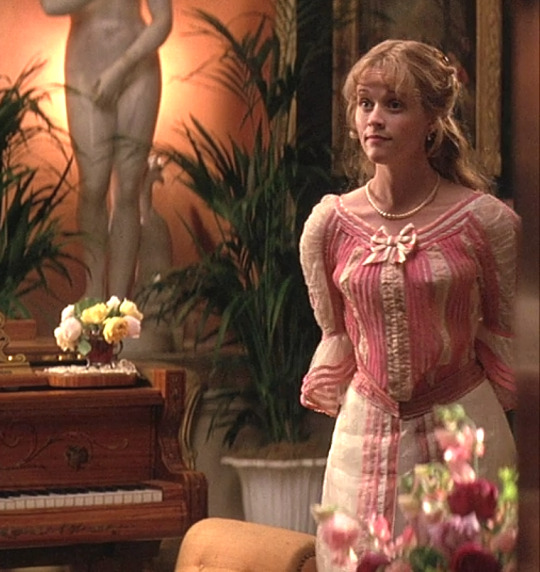
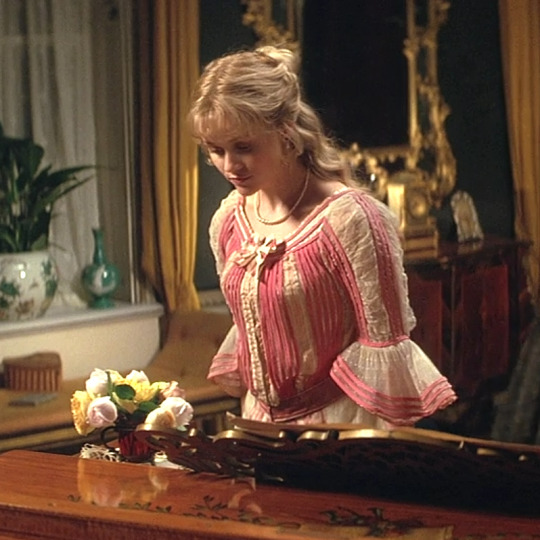
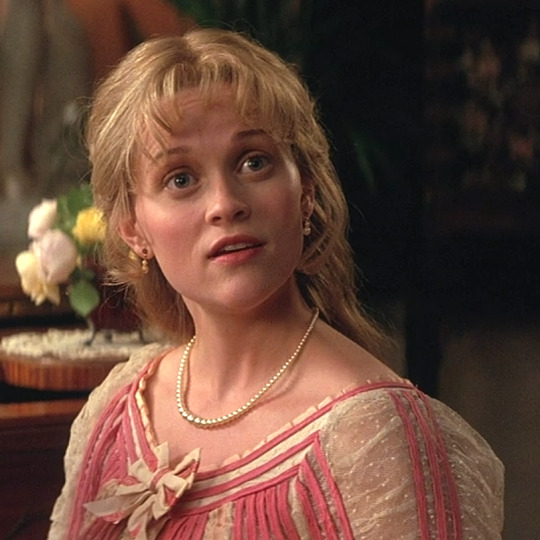

One Dress a Day Challenge
March: Pink Redux
The Importance of Being Earnest / Reese Witherspoon as Cecily Cardew
This dress is mostly seen from the waist up, but we get enough of a glimpse of the skirt to tell that it's mostly white with pink stripes down the front, and you can just barely make out a pink stripe around the bottom as well in the rear-view seated shot. The top appears to be mostly white or very pale pink with sheer sleeves (possibly organdy) and liberally applied pink ribbons.
Although the play was written in 1895, the costuming in this movie seems to be from about ten years later. The costume designer was Maurizio Millenotti.
#the importance of being earnest#pink dresses#pink dress#reese witherspoon#one dress a day challenge#one dress a week challenge#2002 films#2002 movies#1900s style#1900s fashion#edwardian era#edwardian style#edwardian fashion#cecily cardew#maurizio millenotti#20th century costumes#pink redux
38 notes
·
View notes
Text


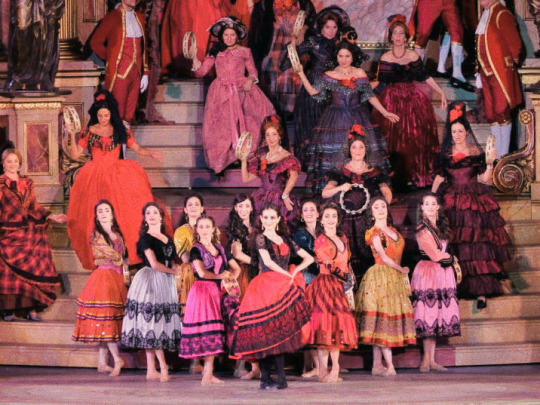
dancers on set of Franco Zeffirelli’s “La Traviata” (1983), costumes by Piero Tosi / Arena di Verona dancers on stage for Franco Zeffirelli’s production of “La Traviata” (2019-2023), costumes by Maurizio Millenotti
7 notes
·
View notes
Text
Among the myriad of Emmy contenders, Netflix’s Ripley stands out with its stunning visual storytelling. The series grabs viewers’ attention with its masterful black and white cinematography, fabulous costumes, and intricate set designs, creating a viewing experience like no other. Every shot feels like a masterpiece, and every scene is meticulously crafted, showcasing a level of artistry that truly sets it apart.
So naturally, I was quite thrilled when I had the chance to speak with two-time Primetime Emmy Award nominee Gianni Casalnuovo and two-time Academy Award nominee Maurizio Millenotti, the costume designing geniuses whose creative flair helped bring Ripley to life in the most spectacular way. They shared fascinating insights into the challenges and triumphs of designing costumes for a black and white palette. Together, with the help of a translator, Casalnuovo and Millenotti explained how they used texture, silhouette, and strategic layering to ensure that every detail popped on screen. Their collaborative efforts with the director and cinematographer were crucial in highlighting key elements like unique patterns and worn patches, ensuring that the story was told as much through the costumes as through the dialogue and acting.
The pair also touched on how they approached the transformation of Tom Ripley’s character through his wardrobe. Starting with simple, utilitarian pieces that reflected his anonymity and desire for a different life, they gradually introduced luxurious textures as he mimicked Dickie Greenleaf, effectively portraying his journey and growing confidence. The costumes of other characters, such as Dickie’s carefree luxury and Marge Sherwood’s practical independence, were meticulously crafted to reflect their personalities and social standings, further enriching the narrative of Ripley.
Landon Johnson: Firstly, congratulations on your outstanding contribution to creating one of the most visually captivating shows on our screens. Black and white cinematography can sometimes pose challenges in ensuring that costume details are effectively communicated on screen. How did you ensure that the intricate elements of your designs were captured and highlighted in the monochromatic palette?
Gianni Casalnuovo and Maurizio Millenotti: Thank you so much for the kind words! We’re incredibly proud of the visual language we created for Ripley. You’re right, black and white can be tricky for costumes, but it also presented a unique opportunity. We focused heavily on texture to tell the story since color was off the table. A character like Tom Ripley might start with smooth, utilitarian fabrics in New York, then transition to luxurious textures as he mimics Dickie Greenleaf. This contrast translates beautifully in black and white, hinting at their different social standing. We paid close attention to silhouette development, using sharp, tailored suits to create distinct visuals compared to loose, flowing garments. Strategic layering of different textures and fabrics added depth and visual interest without relying on color variation. Collaborating closely with the director and cinematographer ensured that key details were highlighted during close-up shots, drawing the audience’s eye to unique patterns, worn patches, or specific jewelry. This approach allowed us to be more creative with storytelling through costume design, resulting in a positive response.
How did you approach the design process differently compared to working with color?
Black and white for Ripley was a design adventure! Color took a backseat to texture, such as rough linens versus smooth silks for Tom’s transformation, and silhouettes like sharp suits versus flowing garments. We layered fabrics strategically to ensure key details popped in close-ups. What initially seemed scary turned out not to be a limitation; black and white became a canvas for creative storytelling.
What guidance or freedom did Steven Zaillian give you in terms of his vision?
From the outset, we enjoyed a close collaboration with director Steven Zaillian. Daily meetings fostered a constant exchange of ideas. Steve actively participated in shaping the show’s visual identity, providing valuable guidance on the overall aesthetic while also giving us the freedom to explore creative costume concepts within that framework. This collaborative approach ensured a cohesive visual language for Ripley.
Ripley is set in the 1960s, a time known for its distinct fashion trends. How did you incorporate the fashion of the era into the costumes while maintaining a timeless quality that resonates with contemporary audiences?
Ripley’s 1960s setting offered a rich sartorial playground, but we wanted the costumes to transcend the era and connect with modern viewers. We opted for subtle nods to the decade rather than full-on mod revivals, focusing on clean lines and classic tailoring with hints of 60s flair. Quality materials and construction ensured the costumes looked polished and relevant, regardless of the decade. Silhouettes were created to be universally flattering and modern, avoiding extreme trends. Elements of 60s fashion reflected characters’ personalities and journeys, like Tom Ripley’s initial youthful rebellion evolving into a sophisticated look.
The protagonist, Tom Ripley, is a complex character with a multifaceted personality. How did you use costume design to reflect his evolution throughout the series?
Tom Ripley’s journey is mirrored in his wardrobe. His initial look reflects anonymity and yearning for a different life with simple, utilitarian pieces. As he becomes entangled with Dickie Greenleaf, his clothing subtly shifts to incorporate elements of Dickie’s affluent lifestyle. The lines between Tom and Dickie blur as the series progresses, with Tom’s wardrobe becoming more confident and intricate. By the end, Tom’s wardrobe develops a distinct identity, reflecting his transformation into a complex character.
How about with the other characters, such as the detective, Dickie, and Marge?
Costume design played a crucial role in defining other characters too. Dickie Greenleaf’s wardrobe embodied carefree luxury with lightweight fabrics and clean lines. Marge Sherwood’s clothing reflected practicality and independence with tailored separates and comfortable pieces. The detective’s wardrobe, characterized by classic, well-tailored suits, conveyed quiet authority and professionalism. These choices visually emphasized the characters’ personalities and social standings.
Did you encounter any specific historical or cultural references that influenced your costume designs for Ripley? How did you balance authenticity with creative interpretation?
We drew inspiration from 1960s fashion photography, magazines, and films, paying attention to key trends like menswear-inspired clothing for women and leisurewear. We balanced historical authenticity with creative interpretation, using textures like linen, tweed, and poplin to evoke the era. Cultural references subtly influenced designs, like Marge’s clothing echoing the feminist movement. Our goal was to create costumes that felt both authentic to the period and visually compelling for a modern audience.
What insights can you share about the collaborative process between costume design and other departments, such as cinematography and production design, in bringing the world of Ripley to life?
Ripley thrived on a constant conversation between different departments. We worked closely with the cinematographer to ensure key costume details were highlighted in black and white. Collaboration with the production designer ensured clothing seamlessly integrated with the visual environment. The makeup department created looks that complemented the costumes and emphasized characters’ personalities and journeys. This continuous exchange of ideas enriched the visual storytelling, creating a truly immersive world.
How do you hope viewers will perceive and interpret the costumes in Ripley? What emotions or messages do you aim to evoke through your designs?
We hope the costumes in Ripley become silent storytellers, offering a lens to understand the characters’ personalities and journeys. Tom Ripley’s transformation, the 1960s style, and the power of black and white are central themes. Through texture, silhouette, and layering, we aim to evoke emotions of mystery, intrigue, and transformation. We want the costumes to spark conversation and leave a lasting impression, enriching the narrative.
What do you hope audiences will take away from the visual storytelling of Ripley, particularly in relation to the costumes and their role in enhancing the narrative?
We wanted Ripley‘s costumes to be more than just clothes – they should be silent storytellers reflecting characters’ personalities and transformations. The 1960s style and social dynamics peek through the costumes, all in stunning black and white. We hope the costumes go beyond visuals and leave a lasting impression, enriching the narrative for the audience.
How did you feel when you first saw the remarkable end result of your work for the first time on screen? Were there any specific moments or scenes that particularly stood out to you in terms of how your costume designs were showcased in the black and white cinematography of Ripley?
Seeing Ripley come to life on screen after all the hard work was truly a magical experience. Tom’s transformation through his wardrobe was particularly rewarding. The way close-up shots captured the intricacies of the costumes added depth to the story. Black and white cinematography’s dramatic lighting highlighted the costumes’ interaction with light and shadow, enhancing the visual impact.
Ripley was so refreshing for viewers. What can we look forward to next from you both?
We’re thrilled to hear Ripley resonated with viewers. We’re always drawn to diverse projects and excited to explore new genres and challenges. One constant is our passion for using costume design as a storytelling tool. Whether it’s a fantastical world or a contemporary drama, we strive to create costumes that visually enrich the narrative and reveal characters’ inner lives. Stay tuned for our future projects!'
#Gianni Casalnuovo#Maurizio Millenotti#Ripley#Netflix#Emmys#Dickie Greenleaf#Marge Sherwood#Steven Zaillian#Andrew Scott
5 notes
·
View notes
Text


To acknowledge all of those extraordinary people that Andrew thanked and congratulated, I'm adding the nominees from categories that don't always get attention, along with their interviews or featurettes.
Outstanding Special Visual Effects In A Single Episode
Ripley - III Sommerso
John Bowers, Visual Effects Supervisor • Jason Tsang, Visual Effects Supervisor • Joseph Servodio, Visual Effects Producer • Maricel Pagulayan, Visual Effects Producer • Christopher White, Visual Effects Supervisor • Libby Hazell, Visual Effects Producer • Francois Sugny, Visual Effects Sequence Supervisor • Gaia Bussolati, Visual Effects Supervisor • Pepe Valencia, Visualization Supervisor
youtube
Outstanding Sound Editing For A Limited Or Anthology Series, Movie Or Special
Ripley - III Sommerso
Larry Zipf, Co-Supervising Sound Editor/ Sound Designer • Michael Feuser, Co-Supervising Sound Editor • Michael McMenomy, Dialogue Editor • Lidia Tamplenizza, Supervising ADR Editor • David Forshee, Sound Effects Editor • Bill R. Dean, Sound Effects Editor • Wyatt Sprague, Sound Effects Editor • Angelo Palazzo, Sound Effects Editor • Matt Haasch, Supervising Foley Editor • Igor Nikolic, Foley Editor • Dan Evans Farkas, Music Editor • Ben Schor, Music Editor • Jay Peck, Foley Artist • Sandra Fox, Foley Artist
Outstanding Sound Mixing For A Limited Or Anthology Series Or Movie
Ripley - Vll Macabre Entertainment
Michael Barry, Re-Recording Mixer • Larry Zipf, Re-Recording Mixer • Maurizio Argentieri, Production Mixer • Michael Perfitt, Scoring Mixer
youtube
Outstanding Picture Editing For A Limited Or Anthology Series Or Movie
Ripley - III Sommerso
Joshua Raymond Lee, Editor • David O. Rogers, Editor
youtube
Outstanding Period Costumes For A Limited Or Anthology Series Or Movie
Ripley - IV La Dolce Vita
Maurizio Millenotti, Costume Designer • Gianni Casalnuovo, Costume Designer • Ernest Camilleri, Wardrobe Supervisor • Teresa D’Arienzo, Assistant Costume Designer • Francesco Morabito, Assistant Costume Design
youtube
Outstanding Production Design For A Narrative Period Or Fantasy Program (One Hour Or More)
Ripley
David Gropman, Production Designer • Karen Schulz Gropman, Art Director • Alex Santucci, Art Director • Alessandra Querzola, Set Decorator
youtube
Outstanding Cinematography For A Limited Or Anthology Series Or Movie
Ripley - V Lucio
Robert Elswit, Director of Photography
youtube
Outstanding Casting For A Limited Or Anthology Series Or Movie
Ripley
Avy Kaufman, CSA, Casting by • Francesco Vedovati, Location Casting • Barbara Giordani, Location Casting
Sources 1st image, quote
#andrew scott#dakota fanning#steven zallian#robert elswit#david gropman#many many more#ripley netflix#ripley#emmys 2024#long post#Youtube
35 notes
·
View notes
Text
Jessica Pratt nella Traviata al 100/o del Verona Opera Festival
Jessica Pratt torna all’Arena di Verona da protagonista dopo il successo della serata-evento con Placido Domingo: domani sera sarà per la prima volta in Arena (e in Italia) Violetta nella Traviata, ultimo allestimento firmato da Franco Zeffirelli con i costumi di Maurizio Millenotti, le luci di Paolo Mazzon e le coreografie di Giuseppe Picone. Il soprano, allieva di Renata Scotto, calca il…
View On WordPress
0 notes